The secret to skipping the queues in the world's most crowded cities
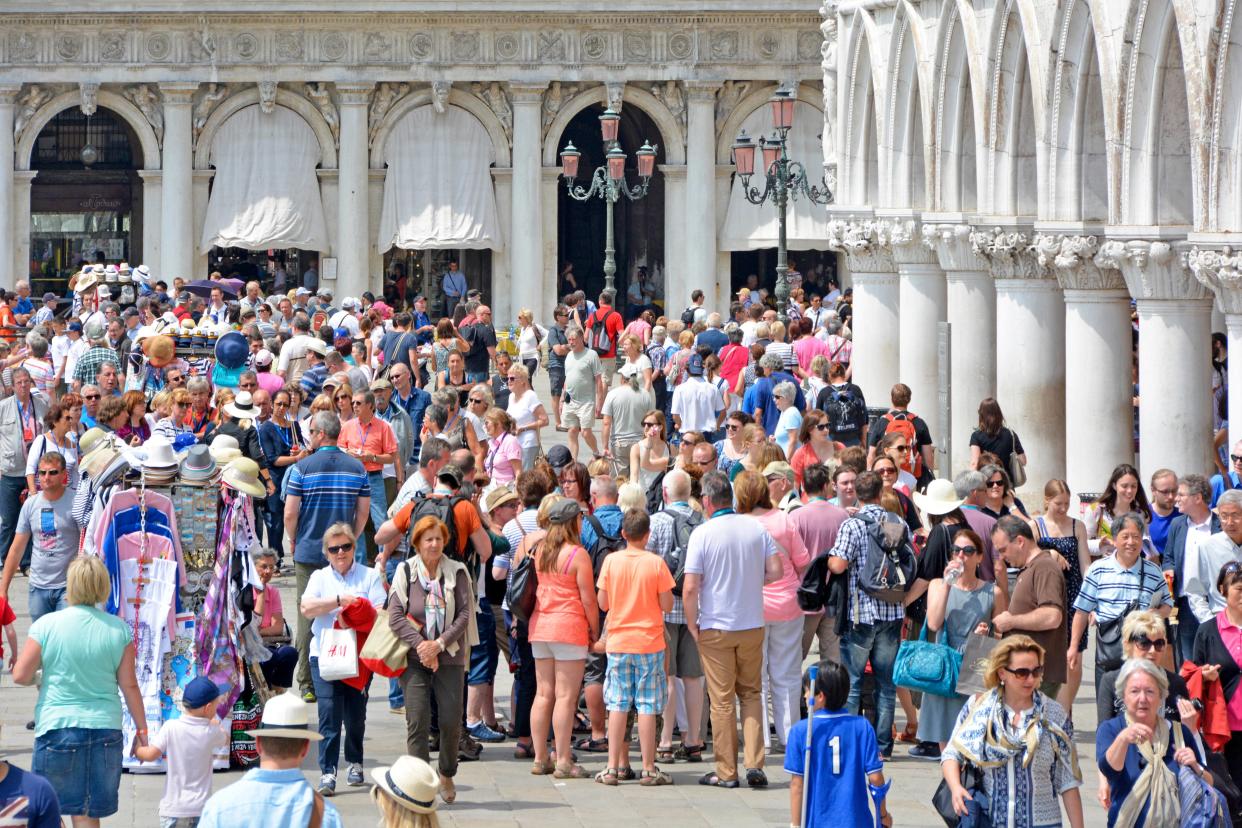
Some of the top destinations in Europe are struggling under the weight of tourists. In recent weeks, the woman in charge of managing tourism in Venice has described July and August in the city as like a war zone, in Barcelona an open-top bus was sabotaged by locals sick of the number of visitors, and Dubrovnik is considering plans for strict limits on the number of tourists and cruise ships. There have also been calls for help from residents in the Isle of Skye, and claims that Oxford has become a “tourist hell”.

No one wins from this sort of overcrowding, and ultimately it will seriously damage the most beautiful and historic places.
The best solutions will depend on the destination concerned, though some sort of limit on numbers seems inevitable in places like Venice, Rome and Florence. One consistent problem however, is the herd-like instinct of tourists obsessed with seeing the most famous sights. I do question the point of standing in a scrum of people trying to catch a glimpse of the Mona Lisa in the Louvre, or the Birth of Venus in the Uffizi, for example.
There is an obvious solution for a better experience, especially if you wish to visit indoor museums – travel in winter.
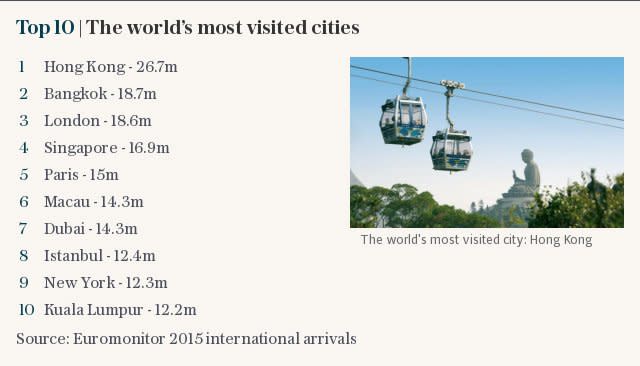
An alternative strategy, if you are travelling in peak season, is to forget about the most famous sights. Every great city has some excellent alternatives which will be far less crowded and, because they are usually smaller, are often much more manageable to visit and easier to enjoy.
You can also sidestep some of the worst queues by using Google’s Popular Times charts. Using results generated by data collected from visitors’ phone signals, the chart indicates – hour by hour and for each day of the week – how busy the sight is likely to be.
Below we've listed tips for some of the world's most popular cities and attractions. They won't guarantee a stress-free visit – but they'll certainly help.
Paris
The queues outside the Musée d’Orsay – the former railway station with more impressionist paintings than any other museum in the world – can be ridiculous. But you can usually walked straight into the Musée de l’Orangerie (musee-orangerie.fr) on the opposite side of the river. Upstairs are the greatest of Monet’s water lily paintings and downstairs is an excellent collection of impressionist and early modernist paintings.
The French capital's hiddem gems, according to Natasha Edwards, include Eglise St-Etienne-du-Mont (www.saintetiennedumont.fr), home to the shrine of Saint Geneviève, patron saint of Paris, who saved the city from invasion by Attila the Hun in 451; Fondation Le Corbusier (www.fondationlecorbusier.fr), a collection of modernist houses and studios; and the Jardin des Serres d'Auteuil (www.equipement.paris.fr/jardin-des-serres-d-auteuil-1780), featuring a magnificent tropical greenhouse, filled with steamy palms, an aviary and pools of Japanese carp, and others devoted to orchids, azaleas, succulents and ferns.
Read the rest of her Paris guide here or download our free app, which features the guide.
If you really can't miss the Musée d’Orsay, the quietest hours are - according to Google - 9am-10am on Saturday and Sunday. But later on both days it is very busy, as is Tuesday. Good options are Wednesday morning and the last two hours of late opening (until 9.45pm) on a Thursday. (Closed Monday).
You can book tickets for a timed entry to the Eiffel Tower online (€17; toureiffel.paris), but there may still be a significant wait to get past security checks in peak season. This is most effectively avoided by booking an early-morning entry. Better still, join the queue at the south pillar 15-30 minutes before opening time. The wait is usually shorter if you climb the stairs to the second level, where you can then buy a further ticket to the summit levels.
If you can’t reserve ahead, or simply want more freedom to choose the day and time when you want to come, then be prepared to queue — the tower gets as many as 32,000 visitors a day in high summer. That said, there is more chance of shorter queues at meal times (that famous French lunch break), on foggy days, in winter, or late at night (around 9 or 10pm) when the coach tours have gone.
Entrance to the nave of Notre-Dame Cathedral is free. There can be a long queue to get in and there is no way around this – but it moves very fast. If you want to climb the towers, you can’t book in advance, and there will always be a wait because a limited number of people can go up at one time, so your best bet is to get there little before the 10am opening time.

The secret to Disneyland Paris is to have a plan. Decide which rides you’d like to try in advance, arrive very early and avoid bottlenecks by strategically timing your route; there is a science to navigating the park.
Arrive before the official opening time and work out the best order in which to do rides - based on the availability at rides, which you could view on the Disney app - even if that includes counter-intuitively criss-crossing the park several times. Book popular rides in advance using the FastPass system (where you pick up a timed ticket and visit the ride during an allotted time slot).
Venice
Not only do you have to queue just to get into St Mark’s Basilica, so crowded is it inside that you can’t appreciate the extraordinary 12th-century marble floor and wall mosaics. Instead take the ferry to the island of Torcello, where there is an equally great cathedral with glittering mosaics but a trickle of tourists.
Anne Hanley's hidden gems include Palazzo Grimani (pictured; www.palazzogrimani.org), "one of the city's great Renaissance private palazzos", which reopened in 2008 after a 27-year restoration. And don't forget that a gondola ride need not mean getting ripped off. "You can get a gondola ride for just €2 a head by taking one of the large traghetto (ferry) gondolas with two oarsmen that cross the Grand Canal at strategic points," she says. "It's de rigueur to do the crossing standing up, like the locals."
Read the rest of her Venice guide here or download our free app, which features the guide.
Rome
The queue for the Vatican Museum is such that barriers have been permanently installed along the pavement leading up to it. Part of the problem here is the relatively short opening hours of 9am-4pm, which means that the museum is normally consistently busy all day, and the Sistine Chapel perpetually crowded. However, Google's Popular Times charts suggest 9am on a Wednesday is relatively quiet – head straight to the chapel on arrival.
Across town, alternatively, you can always walk straight into the Barberini Palace (barberinicorsini.org) where the galleries are empty of people and home to some of the greatest paintings by Raphael and Caravaggio, and Holbein’s famous portrait of Henry VIII, among many others.
Lee Marshall, our Rome expert, suggests eschewing the haul down to Pompeii in favour of the half-hour hop to Ostia Antica (ostianticateatro.it), an impressively preserved ancient city, whose Roman theatre is still used for plays and concerts during the summer months. He also recommends the "architectural marvel" of San Carlo alle Quattro Fontane (www.sancarlino.eu); a trip to the "hopelessly romantic" protestant cemetery (www.cemeteryrome.it); and the church of San Clemente (www.basilicasanclemente.com), "one of Rome's most worthwhile but least publicised sightseeing treats".
Read the rest of his Rome guide here or download our free app, which features the guide.

Barcelona
The prospect of long queues put some people off visiting Gaudi's Sagrada Familia. Avoid them by pre-booking a slot online at sagradafamilia.org – just make sure you turn up on time for your allotted entry.

Barcelona's best lesser-known sights, according to art historian Gijs van Hensbergen, include Roman Barcino, a perfectly preserved Roman necropolis just off the hectic La Rambla, and the Museo Nacional de Arte de Catalunya, packed with amazing modern art.
Sally Davies advises visiting the Museu Frederic Marès (www.museumares.bcn.cat) - "In a town with no shortage of quirky museums, this might be the most idiosyncratic," she says. "You'll find a room full of keys, another of walking sticks and 'gentlemen's accessories', and walls groaning with clocks, weapons and religious artefacts. Most charming, however, is the Sala de les Diversions, its glass cabinets chock-full of tin soldiers, music boxes, paper theatres and board games." She also recommends the Recinte Modernista (pictured; www.santpaubarcelona.org), a hospital complex set in peaceful gardens.
Read the rest of her Barcelona guide here or download our free app, which features the guide.

Pompeii
The crowding in Pompeii in high summer is terrible. Instead, go to the extraordinary Villa di Poppea (pompeiisites.org), one stop up the railway line. Here, two dozen rooms of a sumptuous imperial villa have been exposed, including some of the best preserved and most beautiful Roman wall paintings anywhere.
If you must see Pompeii, then avoid Saturday and Sunday, and arrive as early as possible (the site opens at 830am at weekends, or 9am during the week) or after 1pm – the crowds tend to subside as the day wears on.
Florence
Long opening hours at the Uffizi (8.15am-6.50pm) are a bonus. Arrive at 8.15am for the best experience, reckons Google, or just before 5pm for the last couple of hours of the day. Thursday is quietest. (Closed Monday).
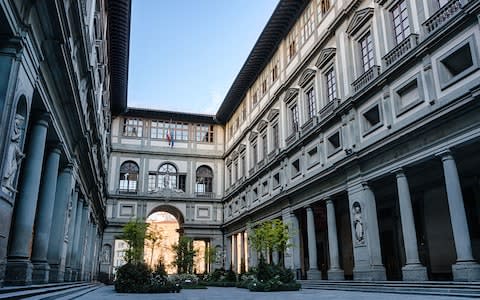
The city's underrated spots include the Mercato Centrale. "Next to the church of San Lorenzo, this covered market is an Aladdin's Cave of gastronomic treats, and many of its stalls are actually full-on delis that will ship all over the world," says Lee Marshall. "Head to Baroni for cheeses and cured meats and Conti for olive oil, sun-dried tomatoes and other Mediterranean marvels. And if you want to know what real Florentines eat when they're feeling peckish, stop off at Nerbone, a busy snack stall that serves up lampredotto - boiled tripe, wrapped up in a panino."
London
The National Gallery can be ridiculously busy. Try the Wallace Collection (wallacecollection.org), which has old masters – from Titian, Rubens and Rembrandt, to Canaletto and Gainsborough. It’s nearly always quiet and also free
For the Tower of London, arrive around 30 minutes before opening if you're buying tickets on the day – this will also give you a better chance of getting on one of the (free) Beefeater tours as soon as possible. Buy fast-track tickets online or at some tube stations to avoid queues and walk straight in on arrival. You can also skip queues with the London Pass, but will still have to wait as you go through security. Keep an eye on the Jewel House queue and its quirky dynamics and pounce as soon as it shortens. But leave enough time, as it shuts half an hour after closing time.
For Westminster Abbey in the popular summer months, arrive 20 minutes before opening time to avoid hour-long queues. The Abbey becomes overcrowded very quickly during peak times – particularly around lunchtime, after tourists have spotted the Changing of the Guard at Buckingham Palace.
Time your visit to take advantage of the Abbey's extended opening hours on Wednesdays, when it stays open until 7pm for individual visitors (no groups or tours). Arrive by 5pm (last admission is 6pm) to allow yourself plenty of time to explore.
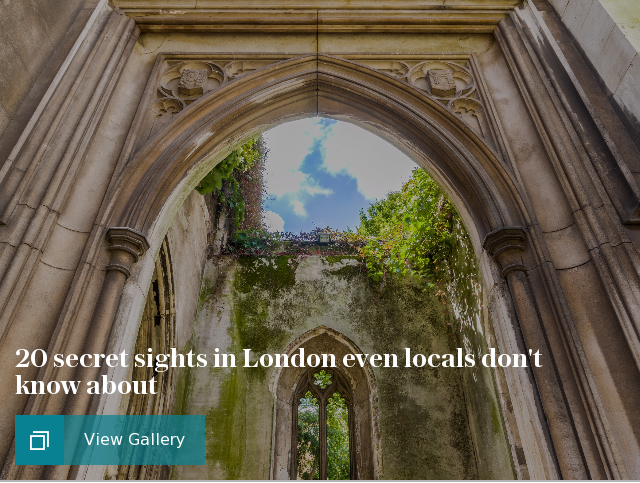
Madrid
Every day there is a dip in numbers at the Prado during the siesta hours of 2-4pm. It stays open until 8pm but remains busy until then. Wednesday is quietest. (Open every day).
Amsterdam
They get up late in Amsterdam. The Rijksmuseum is dead as a doornail from 9-11am, then consistently busy until closing at 5pm. (Open every day).
Rodney Bolt's favourite unsung sights include the Pianola Museum (www.pianola.nl) "for its sheer eccentricity and eerie concerts, where the audience sits around politely listening to a playerless piano"; Ons' Lieve Heer op Solder (pictured; www.opsolder.nl), a restored 17th-century canal house; and the Verzetsmuseum (Museum of the Resistance; www.verzetsmuseum.org), which offers a glimpse of life in the Netherlands under the Nazi occupation, and of the underground resistance movement.
Read the rest of his Amsterdam guide here or download our free app, which features the guide.
Dubrovnik
Evenings, when the day-trippers have gone, are a great time to explore the old city. Or else take a sea kayaking excursion to Lokrum, says Jane Foster. "Accompanied by instructors, half-day tours (3 hrs) take you from the foot of Lovrijenac Fortress (just outside the city walls, close to Pile Gate), skirting round Dubrovnik’s medieval walls then out to the tiny lush island of Lokrum, where you stop on Betina beach and have time for snorkeling and exploring the botanical garden."
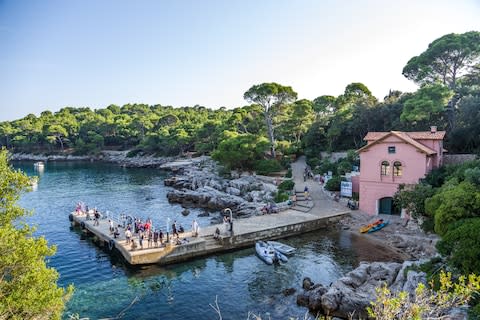
Taj Mahal
The best-known - and arguably the most beautiful - building in the world attracts around seven million visitors each year, so even on quiet days an element of queuing is to be expected. Minimise your wait with good timing, and being sensibly prepared for the understandably strict security.
Arriving soon after dawn is the only sure way to avoid the crowds. From 10am until sunset Indian tourists arrive in vast numbers and in large tour groups. There are three entrances, the West, South and East Gates; the East Gate being the most easily accessible from most hotels. On reaching the East Gate, four lanes lead to security: foreign women, foreign men, local women and local men. To see the Taj Mahal with the fewest people, it is best to arrive at the West or East Gates at 6.30am in winter - half-hour before it opens. (The South Gate doesn’t open until 8am). Joining the queue at 7am can mean a wait of 30 minutes to reach security as a foreigner. If you don’t want to get up that early - or it is a really foggy morning - the queue is often shorter around 8.30am after the first rush to get in.
To avoid the afternoon crowds - and get beautiful sunset photographs of the Taj Mahal - take a car or rickshaw across the Yamuna River to the restored Mehtab Bagh gardens on the opposite bank. On the way visit the ‘Baby Taj’, the marble tomb of Itimad-ud-Daula, father of Mumtaz Mahal.
New York
The best way to get your bearings, and an idea of the sheer size of the city that never sleeps, is from the observatory decks of the Empire State Building. If you buy tickets online you can miss the queues and go straight up - and it's definitely worth paying the extra to see the 102nd floor Top Deck.
While the views are stunning during the day, it’s even more fun to come at night, with the city lights glittering in darkness or shrouded in mist. The viewing deck is open until 2am, so consider a night visit for an alternative view of the city’s famous skyline – crowds disperse by 10pm. For an added bonus, visit between Thursday and Saturday evening and you may be lucky enough to have your visit soundtracked by a live saxophonist.
For the Statue of Liberty, book your tickets online to avoid the queues at the Statue Cruises booth – be sure to bring printed tickets and ID. Access to the crown is by advanced reservation only, from Statue Cruises.
The best small museum in New York, according to Douglas Rogers, is the Frick Collection (www.frick.org) - it's filled with European masters and perfect if you don't fancy dealing with the crowds at MoMa or The Met. He also advises visiting the Highline (www.thehighline.org), an elevated public park with fabulous views of the Hudson River, and Arthur Avenue in the Bronx (www.arthuravenuebronx.com) - "where Italians who moved to the suburbs come on weekends to buy their beloved produce and to have a taste of the Old Country".
Read the rest of his New York guide here or download our free app, which features the guide.
The Grand Canyon
Embrace long-range planning: decide on a trip well over a year in advance and make reservations at least a year ahead. The Canyon runs in an east-west direction for 27 miles, and is an average of 10 miles wide. Grand Canyon National Park encompasses 1.2 million acres. Your experience there will be determined by which rim you visit (the edges are only 24 miles apart as the crow flies; a distance that takes 200 miles to drive by car). The South Rim is easier to reach from Phoenix or Las Vegas, and consequently much more crowded. Visit between mid-May and mid-October and head to the North Rim - it is a much longer drive, but a sure-fire way to avoid the hordes.

The Great Wall of China
No trip to Beijing is complete without seeing the Great Wall. Getting there is hardly easy, though. Mutianyu is probably the best and most accessible part, and there is a public bus from Dongzhimen bus station at 7am and 8.30am. It takes two-and-a-half hours, but only costs 16 yuan (£1.60) each way. Get off at Hongluo and haggle for a cab. If you have the cash, however, hire a private driver, who will whisk you up and back for around 600-700 yuan (£61-£72). Once you get to Mutianyu you can walk a few miles along the wall and climb the steps. On your way back, try the toboggan, 55 yuan.
Chichen Itza
Don't be convinced by the countless hawkers selling organised tours to visit the imposing archeological site and Wonder of the World. A bit of forward planning and the willingness to delve into Mexican public transport will reward you with a much more enjoyable (and inexpensive) experience.
Be confident, be prepared for an early start, and hail a collectivo to be at the main site in just 45 minutes from Valladolid. Arrive before 7.30am and you'll walk straight in, have the site largely to yourself, and breeze out again before the influx of coach trips and guided tours come to clutter your Instagram shots.
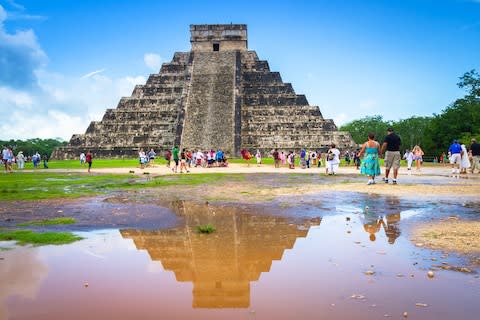
Angkor Wat
Of course, Angkor Wat itself, with its vast friezes of soldiers and devils and dancing girls, is always full of hordes. But with clever timetabling – namely those couple of hours when most people stop for lunch, and the very beginning and very end of the day (the complex opens at 5am and shuts at 6pm) – the other main sights can be shared with comparatively few.
When visiting the main temple itself, approach from the East Gate and explore the temple from the far side, and you'll occupy the eery corridors largely alone. Arrive before sunrise and leave through the West Gate as the tour throngs are just pulling in.



